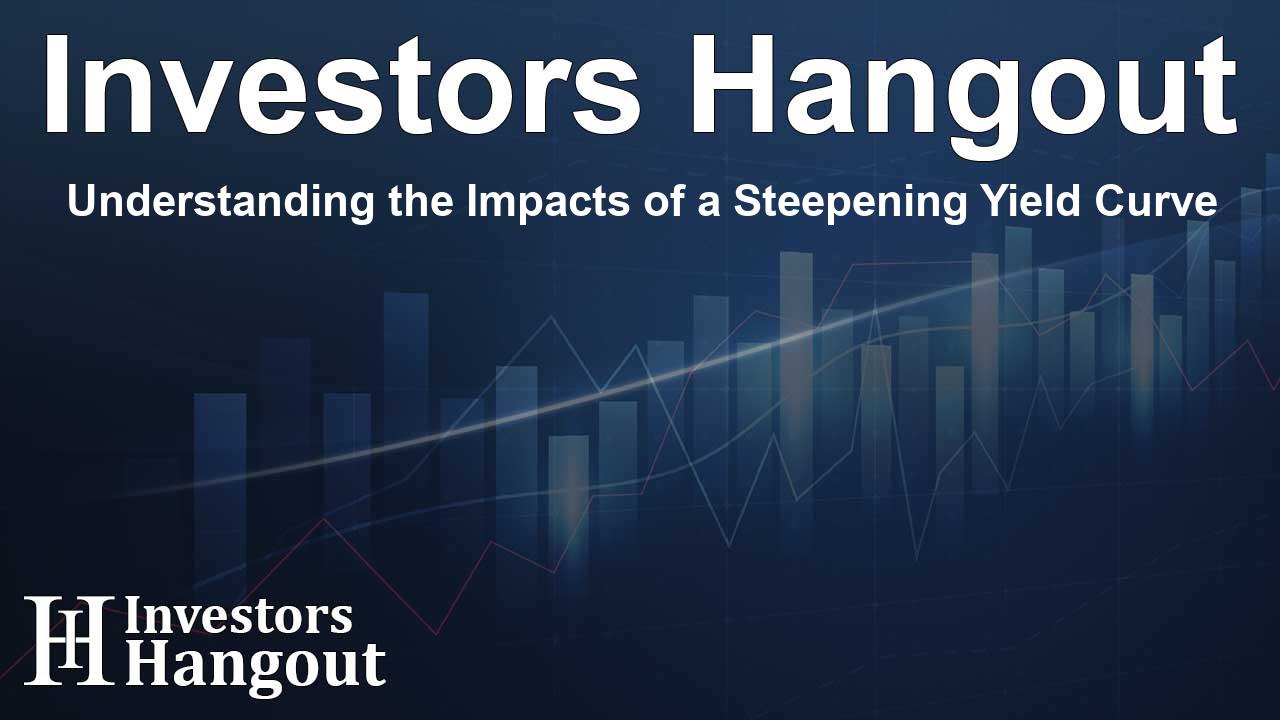Understanding the Impacts of a Steepening Yield Curve

Market Dynamics and the Current Landscape
As we progress through a recovery rally, the proximity of gold stocks to significant targets prompts a clearer understanding of the market's intricacies. It’s crucial to assess the situation from a human perspective rather than a purely technical standpoint.
What defines a significant market shift? A comprehensive market correction, changes in Federal Reserve policies, or a decisive movement in the US Dollar could initiate notable developments. Moreover, pivotal factors like the performance of precious metals, fluctuations in long-term Treasury yields, and the overall direction of the economy play essential roles.
At this moment, the stock market's recovery appears predictable, yet subtle signs of economic slowdown are emerging, prompting analysts to question the true meaning behind reported inflation rates.
The Economic and Bond Market Overview
Recent headlines are ablaze with information regarding mortgage rates, which have experienced a decline to 6.6%. The media suggests that homeowners capitalize on refinancing opportunities. However, it’s anticipated that interest rates could drop even lower before another inflation cycle begins, and this anticipated decline is separate from any actions taken by the Fed.
As the economy starts to cool, the bond market may revert to its former role as a safe haven, which could lead to transient adjustments in Fed policy.
Insights from search trends illustrate a marked lack of public concern about deflation, which had previously peaked during economic crises. The 2021 inflation surge shifted the public's focus back toward inflation fears, distancing attention from concerns regarding deflation.
Ultimately, the macroeconomic dynamics changed significantly in 2022, reinforcing the public's recognition of the ongoing inflation issue. This awareness is critical, as it indicates a break from established trends, whether in Google searches or in bond market performances.
While a contracting economy often influences traditional bond market behaviors—exhibiting lower yields for shorter durations—the current landscape reveals that yields may not retreat to the exceedingly low levels witnessed during previous eras of zero interest rate policies.
Interestingly, the daily trend for longer-term yields remains upward, suggesting that disinflation signals are not yet conclusively indicated. These observations might reflect underlying factors such as ongoing trade tensions and their effects on pricing, which do not necessarily correlate with genuine inflationary pressures.
Analyzing the Short vs. Long-Term Bond Perspectives
As we delve into shorter duration yields, the outlook appears less favorable, indicating a potential shift where shorter-term bonds gain favor over their longer-term counterparts. My investment strategy has involved a consistent allocation to short-term Treasury bonds and funds like SHY, which are aligned with this outlook.
Recently, I also added IEF, which aligns with the assumption that current trends in long-term yields may shift as we observe them moving lower. An important note includes the overall uptrend of the 10-year Note, reaffirming bullish sentiment when considering dividends.
This inclination toward short-term bonds corresponds with the steepening yield curve scenario, serving as a possible indicator for economic troubles ahead and sparking relevant discussions about whether we face inflationary or deflationary challenges.
Market participants seem to be leaning towards short-term securities, signaling either inflationary concerns or impending liquidity issues. My perspective inclines toward an anticipated liquidity challenge and potential deflation sentiment.
The Implications of a Steepening Yield Curve
Now we grapple with whether the current situation signifies a departure from the norm when yield curves steepen. Historical bear markets have illustrated deflationary characteristics tied to steepening yields, with notable examples revealing a trend toward deflation during such periods.
In the case of the 2020-2021 steepening phenomenon, it began with nominal yield declines and transitioned into inflationary conditions, primarily following aggressive monetary and fiscal measures. This shift resulted in a significant “inflation trade” rally.
The subsequent market corrections and yield curve inversions confused many investors, as these events, including the notorious actions of the Fed, were not entirely indicative of a true market downturn.
Today, the market’s upward momentum amid a steepening yield curve raises significant risk apprehensions for investors. Economic conditions and variations in macroeconomic policies might influence outcomes, yet the existing sentiment reflects caution among financial strategists.
In summary, understanding the factors at play within our economy—amidst rising gold stocks and shifting financial indicators—gives investors crucial insights into potential safe havens during turbulent periods.
Frequently Asked Questions
What is a steepening yield curve?
A steepening yield curve occurs when the difference between short-term and long-term interest rates increases, often signaling economic expectations.
How does the yield curve affect the stock market?
A steepening yield curve can indicate higher risks for stocks, often leading to uncertainties about future economic conditions.
What role do bonds play in a recovering economy?
Bonds typically act as a safe haven during economic recoveries, offering stability as compared to the volatility often seen in the stock market.
Why is inflation a major concern for investors currently?
Investors are focused on inflation due to its impact on purchasing power, interest rates, and overall economic stability.
How are gold stocks affected by market trends?
Gold stocks often serve as investment hedges during periods of economic uncertainty, gaining appeal when inflation rises or market conditions draw concern.
About The Author
Contact Addison Perry privately here. Or send an email with ATTN: Addison Perry as the subject to contact@investorshangout.com.
About Investors Hangout
Investors Hangout is a leading online stock forum for financial discussion and learning, offering a wide range of free tools and resources. It draws in traders of all levels, who exchange market knowledge, investigate trading tactics, and keep an eye on industry developments in real time. Featuring financial articles, stock message boards, quotes, charts, company profiles, and live news updates. Through cooperative learning and a wealth of informational resources, it helps users from novices creating their first portfolios to experts honing their techniques. Join Investors Hangout today: https://investorshangout.com/
The content of this article is based on factual, publicly available information and does not represent legal, financial, or investment advice. Investors Hangout does not offer financial advice, and the author is not a licensed financial advisor. Consult a qualified advisor before making any financial or investment decisions based on this article. This article should not be considered advice to purchase, sell, or hold any securities or other investments. If any of the material provided here is inaccurate, please contact us for corrections.
